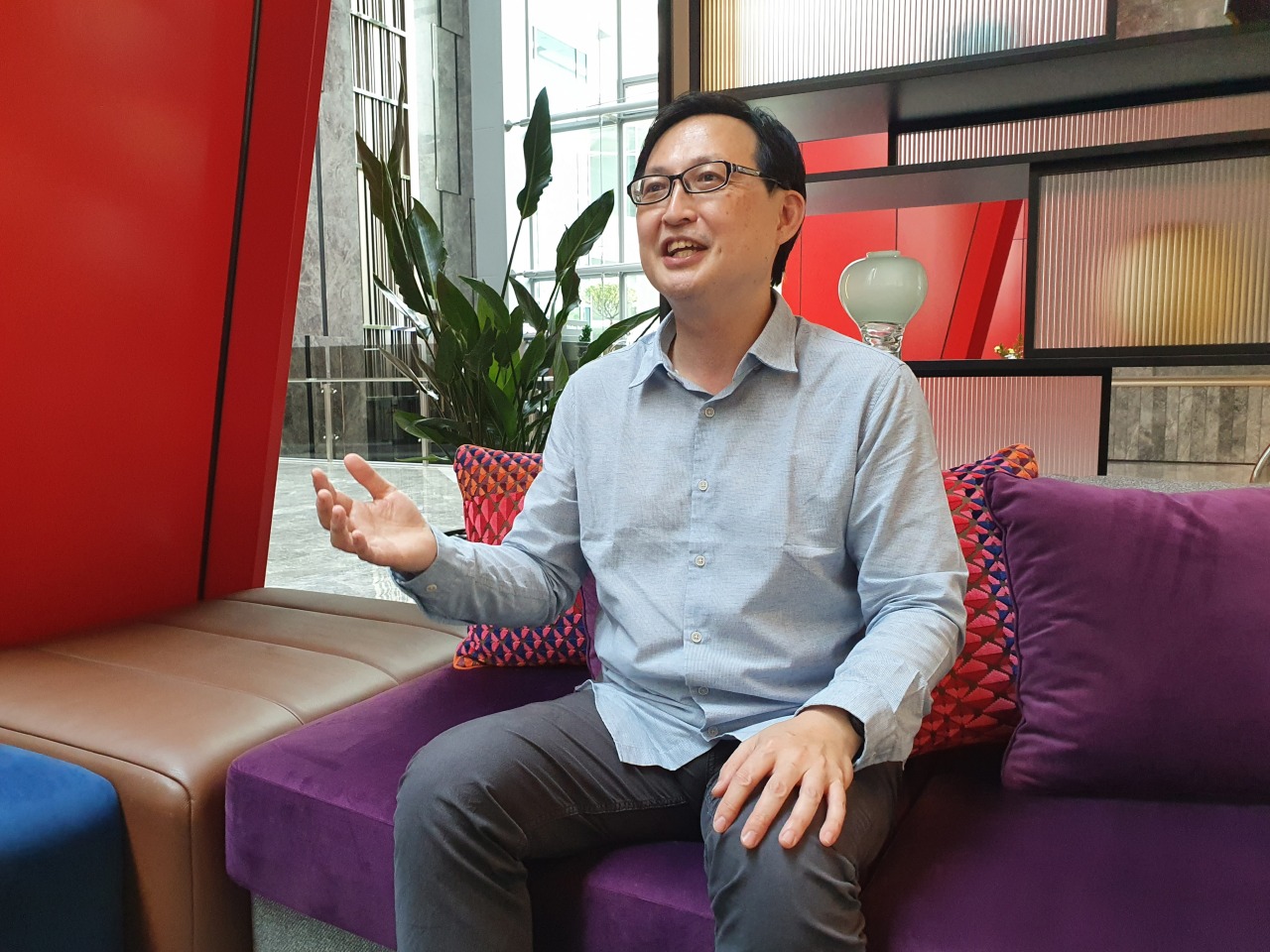As lithium-ion batteries near their full potential, new challengers are preparing a coup d‘état with their next-generation technologies.
If successful, the coup would render conventional lithium-ion batteries obsolete overnight and subvert decades-long industrial order led by Asian battery firms.
Are the days of lithium-ion battery manufacturers coming to an end?
SolidEnergy Systems, a Singapore-based battery developer, is one of the most threatening contenders, with its lithium-metal batteries more than 30 percent stronger than the most powerful lithium-ion batteries in the market.
During an interview with The Korea Herald on Wednesday, Son Yong-kyu, chief technology officer at SES, said that the transition doesn’t necessarily have to be a pistol duel where one side has to fall to the ground.
Rather, established players and new entrants can seek win-win partnerships and usher in the era of future batteries by compensating for each other’s weaknesses.
“The electric vehicle battery business is all about volumes. Startups alone have limits in ramping up production capacities, so they need partners, which is why SES is considering joint ventures with major lithium-ion battery makers including LG Energy Solution, SK Innovation and CATL,” Son said.
For the lithium-ion battery giants, who have spent tens of billions of dollars for expansion in recent years, their greatest fear is that they might have to ditch their factories and build new ones if the paradigm shifts. Forming a joint venture with SES and tapping into its lithium-metal batteries is a solid risk hedging strategy, considering that the manufacturing process of lithium-metal batteries is compatible with that of lithium-ion batteries, according to Son.
“The production lines of lithium-ion batteries are typically comprised of 12 manufacturing processes. Making changes in just two of them can transform the production lines for lithium-metal batteries,” the CTO said.
SES aims to secure an annual production capacity of lithium-metal batteries worth 30 gigawatt hours through joint ventures with lithium-ion battery makers by 2025 and additional 70Gwh with automakers afterwards.
On top of the compatibility, the joint venture strategy allows conventional lithium-ion battery companies to absorb the knowledge that SES has accumulated from manufacturing some 1,000 lithium-metal batteries every month since 2017.
“Starting in September, SES will run a pilot production line to manufacture several hundreds of lithium-metal batteries, real prototypes that will go inside actual electric vehicles, not those small samples made inside labs,” the CTO said. The prototypes will be 60 centimeters long and come in 50 amperes and 100 amperes.
If the pilot production line turns out successful, SES, which eyes a joint venture with Hyundai Motor, will set up a fully automated 1GWh battery plant in South Korea by 2023 and supply lithium-metal batteries to the automaker.
Though SES is on the doorstep of commercializing its lithium-metal batteries, the journey hasn’t been easy.
“Making samples is not difficult, but mass production is a whole different story, because lithium metal is such a sensitive material that is extremely difficult to control,” the CTO said.
Lithium-metal and lithium-ion batteries are both composed of four key components -- cathodes, anodes, electrolytes and separators.
The major difference is that lithium-metal batteries, as the name suggests, use lithium metal for anodes, or the negative side, whereas lithium-ion batteries use graphite.
“When I joined SES in 2016, its lithium-metal batteries could endure no more than 100 cycles. Now, they can withstand 770 cycles. This is about a 700 percent improvement just in five years,” the CTO said.
“When our lithium-metal batteries achieve 800 to 1,000 cycles, they will have a lifespan of 10 years, which is enough to be upsed for electric vehicles.”
Also, based on years of data and experience built from manufacturing tens of thousands of lithium-metal batteries, SES has created a unique algorithm to detect dendrites. The needle-like structures, formed inside batteries during the charge-discharge process, are the root cause of a short circuit or even fires in lithium-ion batteries.
Lithium-metal batteries, too, are not completely free of the dendrite problem.
“SES has invented an electrochemical healing protocol that cures dendrites fundamentally. Simply put, the process repeats charge and discharge until dendrites are stripped off. SES is in the process of patenting this solution,” the CTO said.
“Also, SES fills lithium-metal batteries with super concentrated electrolytes. When lithium ions move through these electrolytes, they are guided to form the layers of lithium-metal anodes more evenly.”
Despite multiple innovations, price still remains a sticking point. According to experts, lithium-metal anodes are roughly 10 times more expensive than graphite anodes.
"Though 10 times more expensive, lithium-metal anodes have capacity of 3,860 milliampere hours per gram, which 11-12 times higher than 330-360 mAh/g of graphite anodes. This means that much less material would be needed. Also, when lithium-metal batteries become more efficient, we can slice the thickness of lithium-metal anodes from the current 20 microns to 10 microns, for example, and cut costs,” the CTO said
By Kim Byung-wook (
kbw@heraldcorp.com)








